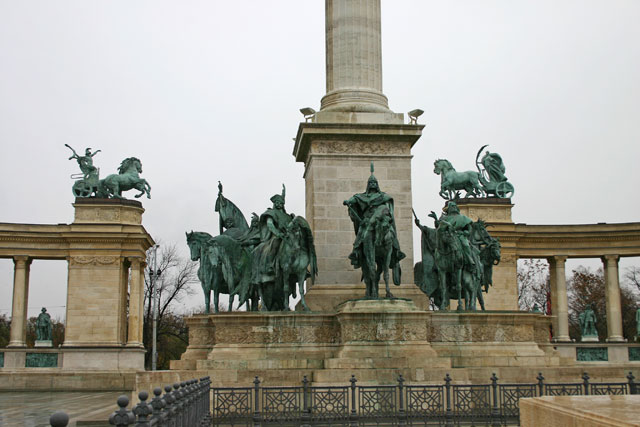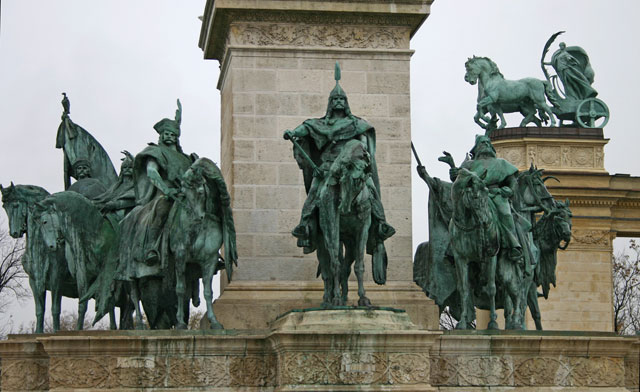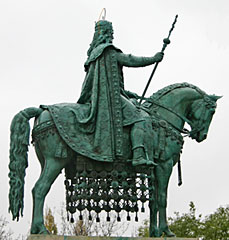|
|
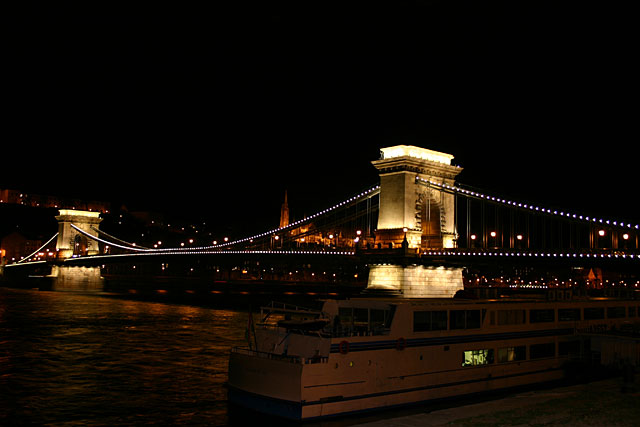
| We traveled from Prague to Budapest by train and
arrived at our hotel on the banks of the Danube near the Chain Bridge
after dark. |
|
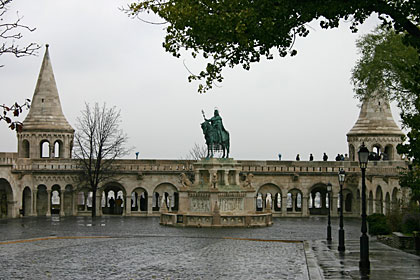
| Fishermen's Bastion is a Neo-Romanesque monument
to the Guild of Fishermen and was built in 1895. In front of the
bastion is a statue of St. István, the king who introduced
Hungary to Christianity. |
|
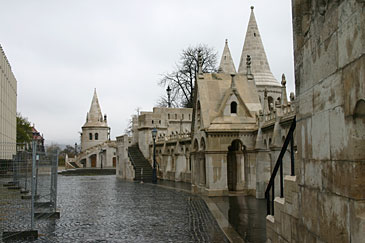
| The bastion occupies the site of Buda's old defensive
walls and a medieval square where fish were once sold. |
|
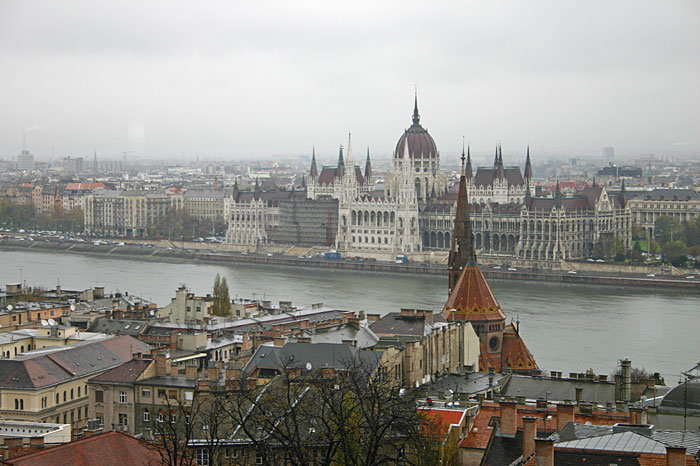
| Budapest straddles the Danube River and consists
of two parts, Buda and Pest, which are situated on opposite sides
of the river and connected by a series of bridges. This is a view
of the Pest side and its Parliament building taken from Fishermen's
Bastion on the Buda side. |
|
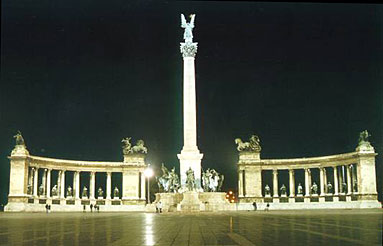
| The Millennium Monument was built to commemorate
Hungary's Millennium celebrations in 1896, but was not completed
until 1929. At the center is a 120 foot high Corinthian column topped
by the Archangel Gabriel holding St. István's crown and cross
signifying Hungary's conversion to Christianity under King István. |
|
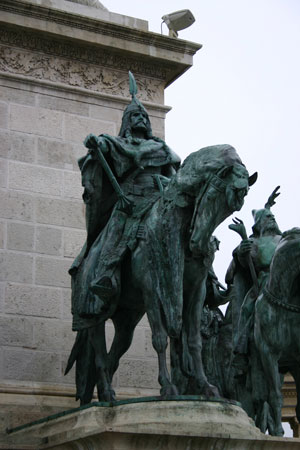
| Árpád, leader of the Magyars who settled
in Hungary in AD 896 is at the front/center of the monument. He is
surrounded by six of the conquering Magyar warriors. |
|
|
|
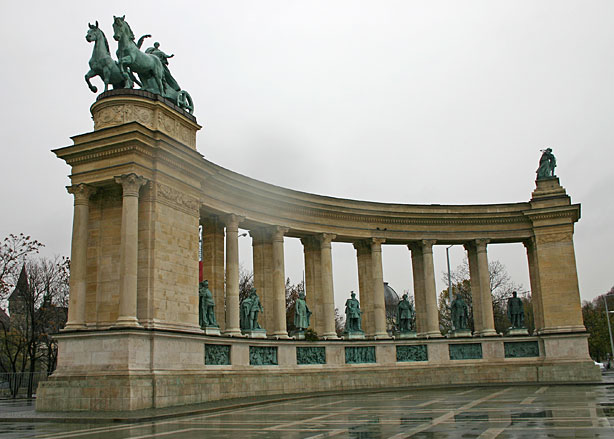
The right-hand colonnade of
the Millennium Monument on Heroes' Square. Statues of great Hungarians
are arranged within the colonnades. |
|

The Central Market Hall in Budapest. |
|

| Inside the Central Market Hall there are more than
180 stalls displaying a huge variety of vegetables, fruit, meat and
cheese. |
|
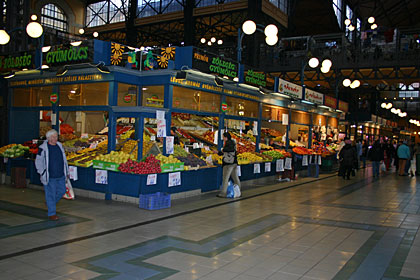
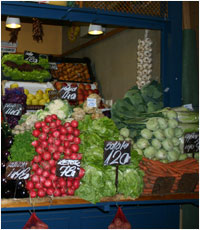
| We saw radishes on display here as large as tomatoes. |
|
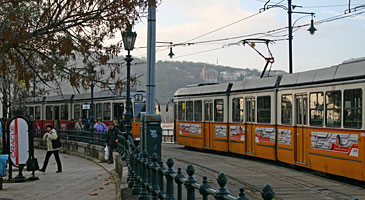
Budapest commuters on their way to work. |
|
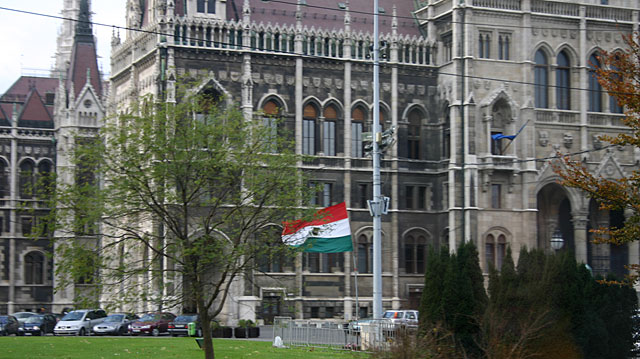
| A Hungarian flag outside Parliament with a hole
in the middle. During the Hungarian uprising against the communist
authorities in 1956, the communist arms were removed from the center
of their flag, leaving a hole. |
|
|
|






